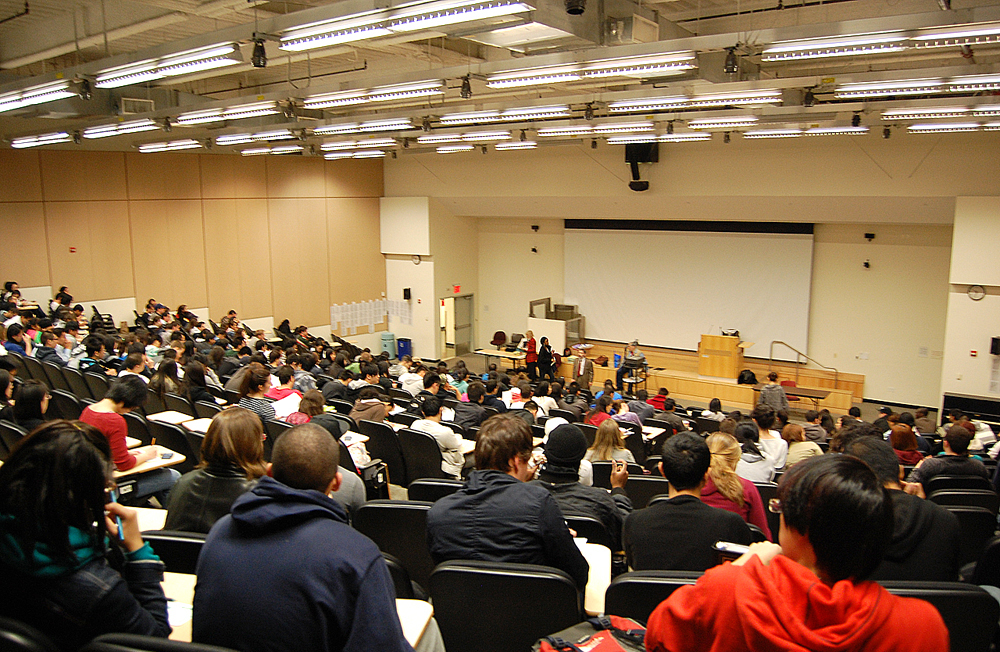Lecture Theater on:
[Wikipedia]
[Google]
[Amazon]


 A lecture hall (or lecture theatre) is a large room used for instruction, typically at a
A lecture hall (or lecture theatre) is a large room used for instruction, typically at a  Material was copied from this source, which is available under
Material was copied from this source, which is available under
Creative Commons Attribution 4.0 International License


 A lecture hall (or lecture theatre) is a large room used for instruction, typically at a
A lecture hall (or lecture theatre) is a large room used for instruction, typically at a college
A college ( Latin: ''collegium'') is an educational institution or a constituent part of one. A college may be a degree-awarding tertiary educational institution, a part of a collegiate or federal university, an institution offering ...
or university
A university () is an institution of higher (or tertiary) education and research which awards academic degrees in several academic disciplines. ''University'' is derived from the Latin phrase ''universitas magistrorum et scholarium'', which ...
. Unlike a traditional classroom
A classroom or schoolroom is a learning space in which both children and adults learn. Classrooms are found in educational institutions of all kinds, ranging from preschools to universities, and may also be found in other places where education ...
with a capacity normally between one and fifty, the capacity of lecture halls is usually measured in the hundreds. Lecture halls almost always have a pitched floor, so that those in the rear are sat higher than those at the front (i.e. tiered seating), allowing them to see the lecturer. The importance of lecture halls is so significant that some schools of architecture have offered courses exclusively centered on their design. The noted Boston
Boston (), officially the City of Boston, is the capital city, state capital and List of municipalities in Massachusetts, most populous city of the Commonwealth (U.S. state), Commonwealth of Massachusetts, as well as the cultural and financ ...
architect Earl Flansburgh
Earl R. Flansburgh (April 28, 1931 – February 3, 2009) was a Modernist architect known for his extensive work in the Boston area.
Early life and education
Earl Robert Flansburgh grew up in Ithaca, New York. His father, Earl Alvah Flansburgh ...
wrote numerous articles focusing on achieving efficacious lecture hall design.
Lecture
A lecture (from Latin ''lēctūra'' “reading” ) is an oral presentation intended to present information or teach people about a particular subject, for example by a university or college teacher. Lectures are used to convey critical infor ...
halls differ from other types of learning space
Learning space or learning setting refers to a physical setting for a learning environment, a place in which teaching and learning occur. The term is commonly used as a more definitive alternative to " classroom," but it may also refer to ...
s, seminar rooms in particular, in that they allow for little versatility in use, although they are no less flexible than, for example, chemistry laboratories. Experimentation, group work, and other contemporary educational methods are not practicable in a lecture hall. On the other hand, lecture halls are excellent for focusing the attention of a large group on a single point, either an instructor or an audio-visual presentation, and modern lecture halls often feature audio-visual equipment. A microphone
A microphone, colloquially called a mic or mike (), is a transducer that converts sound into an electrical signal. Microphones are used in many applications such as telephones, hearing aids, public address systems for concert halls and pub ...
and loudspeaker
A loudspeaker (commonly referred to as a speaker or speaker driver) is an electroacoustic transducer that converts an electrical audio signal into a corresponding sound. A ''speaker system'', also often simply referred to as a "speaker" or ...
s are common to help the lecturer be heard, and projection screens may be used for large displays. The acoustic properties of lecture halls have been the subject of numerous international studies, some even antedating the use of electronic amplification.
Studies into the use of the lecture theatre teaching space have found that students sit in specific locations due to a range of factors; these include being noticed, addressing anxiety or an ability to focus. Personal and social factors are also thought to determine students’ lecture theatre seating choice and the resulting effects on attainment. Studies into the way students use the space indicate that peer group formation exerts a strong impact on attainment and engagement, with groups of similar ability sitting together. Creative Commons Attribution 4.0 International License
References
Educational facilities {{Edu-stub